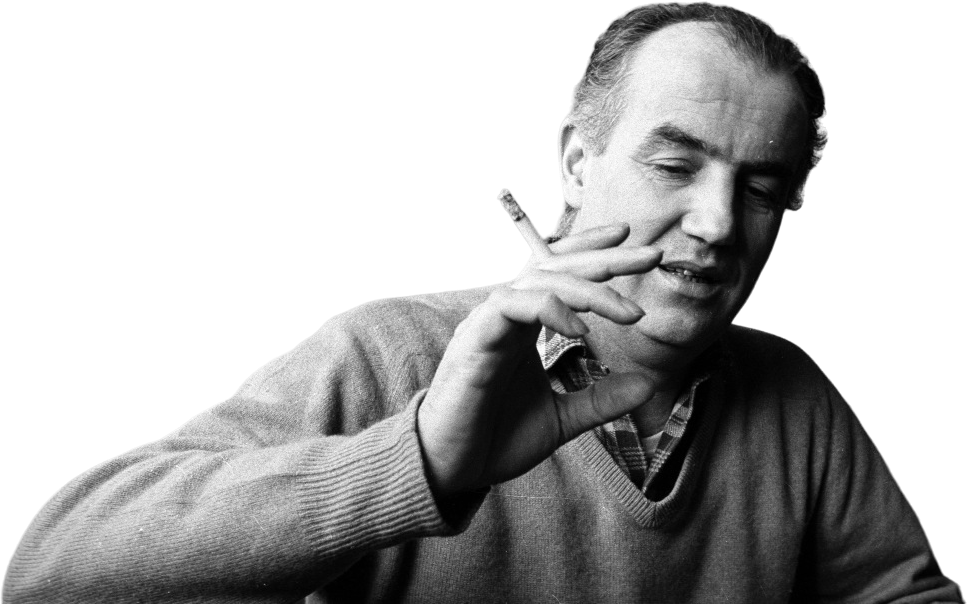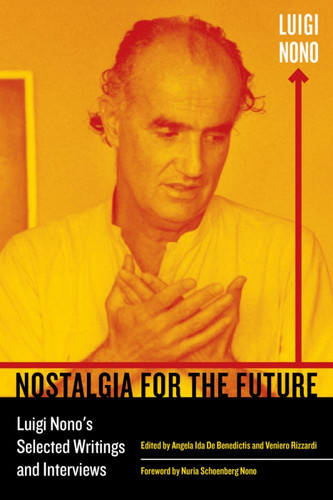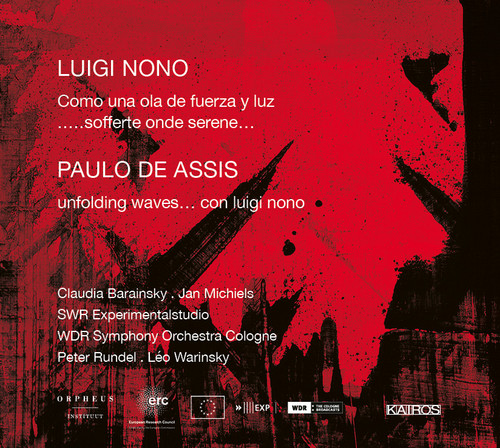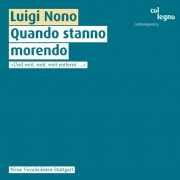Luigi Nono
Luigi Nono's avant-garde partisanship was inseparable from a commitment to socialism, twin aspects of a revolt against bourgeois culture: hence his avoidance of normal concert genres in favour of opera and electronic music, his frequent recourse to political texts and his work in bringing music to factories.

Luigi Nono's avant-garde partisanship was inseparable from a commitment to socialism, twin aspects of a revolt against bourgeois culture: hence his avoidance of normal concert genres in favour of opera and electronic music, his frequent recourse to political texts and his work in bringing music to factories.
Nostalgia for the Future Luigi Nono's Selected Writings and Interviews (Book)
Nostalgia for the Future is the first collection in English of the writings and interviews of Luigi Nono (1924–1990). One of the most prominent figures in the development of new music after World War II, he is renowned for both his compositions and his utopian views. His many essays and lectures reveal an artist at the center of the analytical, theoretical, critical, and political debates of the time.This selection of Nono’s most significant essays, articles, and interviews covers his entire car…
Como una ola de fuerza y luz - Unfolding Waves
Between April and June 1971, after the democratic election of Salvador Allende’s government, Luigi Nono visited Chile for three months, meeting several artists, composers and politicians, among whom was Luciano Cruz Aguayo, one of the leaders of the Movement of the Revolutionary Left (MIR, Movimiento de Izquierda Revolucionaria). Back in Italy, Nono started working on his next musical composition, which was meant to be a piece for piano and orchestra, for Maurizio Pollini and Claudio Abbado. In …
La lontananza nostalgica utopica futura
2000 release - Nostalgic, utopian, future distance\", the title of this piece investigates the possibilities of violin playing, the intimate, physical quality of the sound and the historical dimensions inherent to this instrument.
Quando Stanno Morendo
Works of art are often triggered by private events. Sarà dolce tacere (1960), for example, was written on the occasion of the 40th birthday of Bruno Maderna, Nono's (former) teacher and close friend; and also in 1960 Nono wrote Ha venido for his daughter's first birthday. Djamila Boupachà (1962), ¿Dónde estás, hermano? (1982) and Quando stanno morendo (1982), on the other hand, are clearly expressions attributable to the politically involved, the committed cosmopolitan Nono.
20 Jahre Inventionen V - live electronic
The live electronics that Nono worked with for the first time in the early 1980?s at the Freiburg Experimental Studio also serves the musical displacement: the music moves away from clear spatial and timbral assignations. Due to electronic processing, the sonic characteristics of both instruments, bass flute and cello, can hardly be recognized. Tones and gestures are lengthened into seeming infinity and move in space
A Carlo Scarpa · A Pierre · Guai Ai Gelidi Mostri
** Original 1990 edition LP, comes with a black and white 12-page booklet ** Edition RZ’s vinyl edition of three works by Luigi Nono - a pivotal figure of the Italian avant-garde - all composed and recorded in the mid ‘80s. A lesson in fine-tuning acoustic perceptions, meant for focussed reception in keeping with Nono’s concept of “new listenings”: "This no longer means revolutionizing the entire linguistic system ie. a subversive attack on the institution of music; rather it means progressively…





